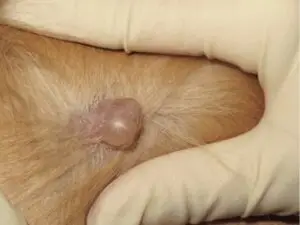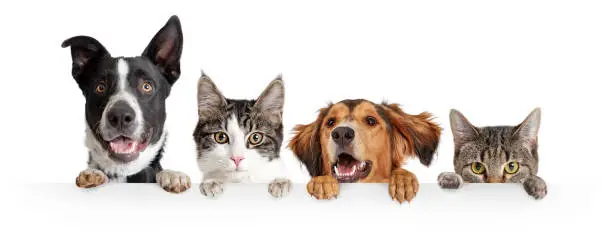One of the most common things clients ask us to check are “lumps” on the skin. Lumps are common in our pets but they can vary widely in their nature and importance. Because of the possibility that a lump may be malignant (nasty cancer), we always recommend that we look at any lumps your pet develops.
In our exam we will have a look at its shape, size, colour and location. We will also check to see if there are any other lumps present. But we will take into account some information from you. It is always helpful if you are able to tell us;
- When you first notice the lump.
- Is it growing?
- Is it changing?
- Is your pet worrying it? (e.g. by constantly scratching or licking at it.)
- Has your pet been seen for this, or any other type of lump in the past?
Then we will recommend the best approach. Options include; removing the lump, taking a sample for laboratory exam (by needle or biopsy collection), treating the lump, or simply monitoring for any changes. The option offered will depend on what category we have put the lump into. Broadly this includes:
1. Cancer / Tumours: are uncontrolled growths of a single cell type, and are very common as a general group. Benign tumours will not spread to other organs to affect their function but malignant tumours will, and can lead to serious illness or even death. Often the tumour type cannot be determined just by looking at it, so we will recommend getting a sample sent away for testing or removal either by a needle aspirate or biopsy. Common examples include lipomas (benign, fatty lumps) and sun cancers (which are often aggressive and need to be diagnosed early).
2. Cysts: are fluid filled swellings which form when skin cells get trapped under the skin and produce fluid. They are usually diagnosed by opening the cavity and releasing the fluid. They will fill up again but are generally not a concern unless your pet worries them.

3. Abscess: Some problems, such as foreign bodies and bites can cause swelling due to accumulated pus. Most abscesses are easily treated with medications. In the case of a foreign body, the pus will keep accumulating and then we would need to remove the cause under a sedation or anaesthetic.
4. Warts: Small “warts” are very common in older pets. They are generally of no consequence unless they start bleeding due to rubbing.
5. Inflammation / Irritation: in a local area can cause lumps. For example a bee sting or if a dog is sleeping on a hard surface you will often find “lumps” developing in reaction to this.
As you can see from this list, there is a wide range of skin “lumps” that your pet can experience. It is quite difficult for you to know a “safe” lump from a lump that is potentially very dangerous on looks alone as they can look deceptively similar. In fact, even as experienced vets, we often really on further testing such as microscopic examination of the lump (biopsy) to tell us what we are dealing with. Our advice is always to get lumps assessed in a consultation – at the very least this will give you “peace of mind” – and in some cases, it may end up saving a life.




